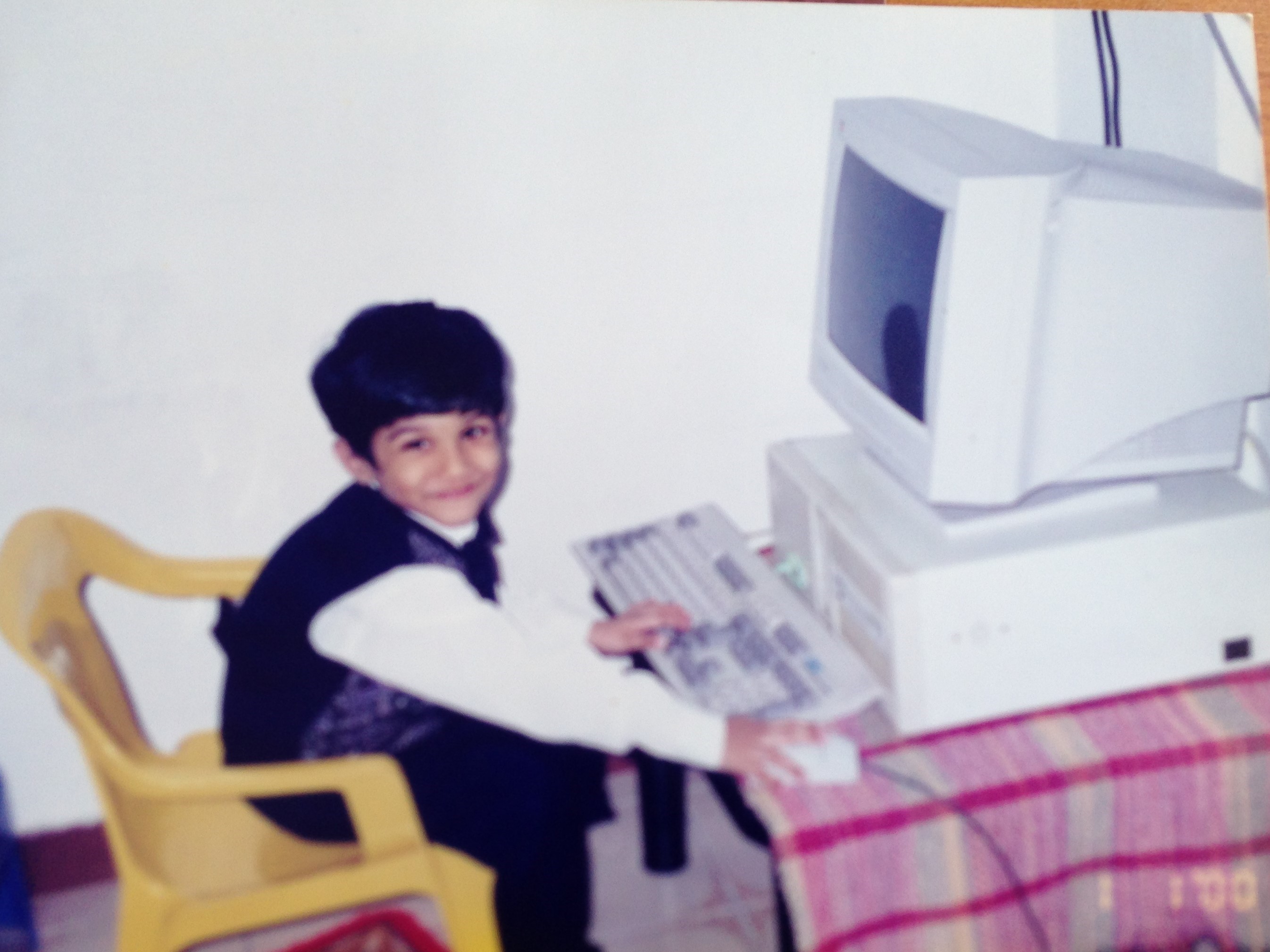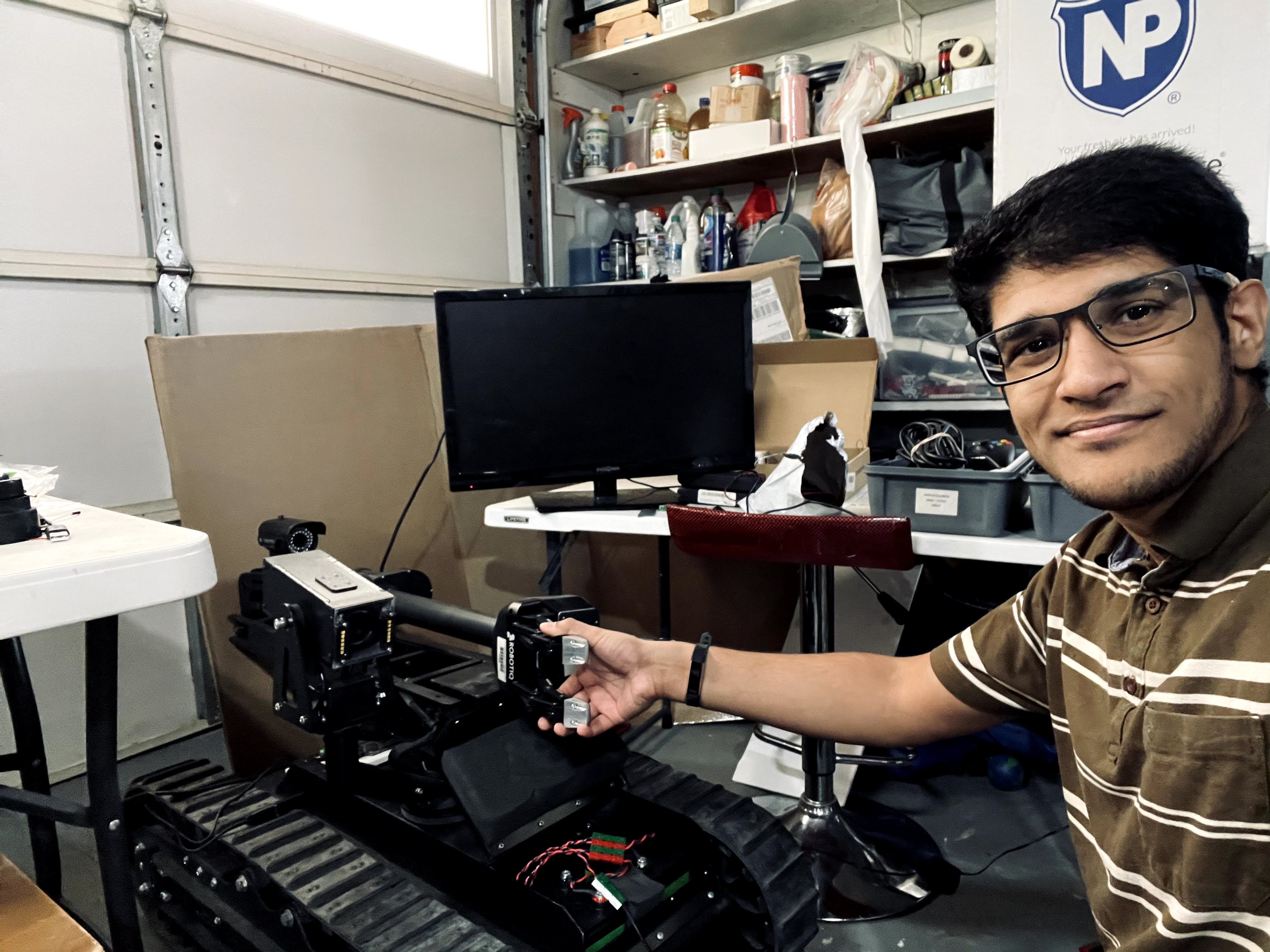Vikram Sai Kishan Sriram grew up in India and Singapore as a child. He then moved to the United States with his family when he was in the 3rd grade and has lived here ever since. His parents, Girija Sriram and Sriram Parthasarathy, are from Tamil Nadu, India. He admires how hard his parents have worked to have the life they have today. He has always been interested in building things and has also always had an engineer's mindset. He credits his family's environment, especially his father, in nurturing his curiosity for building and inventing things. His father has a master's degree in computer science from Bharathidasan University in India and has helped Vikram expand his curiosity throughout his childhood into adulthood. Vikram appreciates his father's support of his curiosity in technology and building things. He recalls his father allowing him as a child to “tinker" and break down his toys to try to invent something new. It gave Vikram the freedom to learn to experiment with the goal of achieving an invention. He expresses “learning a lot during this time period" which made him appreciate his father's wisdom.
 3-year-old Vikram Sai Kishan tinkering with a computer at his home.
3-year-old Vikram Sai Kishan tinkering with a computer at his home.
Vikram graduated with a BS in computer science from UC Davis which has provided him with a strong understanding of hardware and embedded systems. After he graduated, he wanted to infuse what he learned there with the fields of automation and artificial intelligence (AI). As a result, he took the initiative to begin to self-study these two topics. While he was self-exploring these two topics, he found that he really enjoyed them and wanted to pursue a more professional career within them. After searching for a graduate school that was a good fit for his academic goals, he decided to apply and attend Cal Poly Pomona (CPP) to obtain a master's degree in computer science. He mentions that choosing Cal Poly Pomona was an easy choice for him to make. He wanted a hands-on research experience and he knew he would get it there. He recently begun his first semester there and is incredibly happy about his graduate school choice. His goal at CPP is to brush up on his computer science background, learn more about AI, and participate in as many AI projects as possible.
Only a few months into the fall 2020 semester at Cal Poly Pomona, Vikram is already well on his way to achieving his academic goals. At the beginning of the semester he attended an orientation for computer science graduate program students. Within this seminar he was introduced to various faculty research topics. He took interest in Dr. Amar Raheja's work in the Department of Computer Science and the opportunities thereof. After the orientation, Dr. Raheja sent out an email to all students with detailed information of research opportunities available to them. Vikram responded immediately to the email and soon after he had a virtual meeting with Dr. Raheja where they discussed a data processing research opportunity in a collaborative project, he was working on with Dr. Subodh Bhandar in the Department of Aerospace Engineering. Vikram later met with Dr. Bhandari and his team on campus. They both agreed he would be a great addition to the team. Soon after, under the supervision of Drs. Raheja and Bhandari, he began working on UAV-based remote sensing techniques for precision agriculture and bringing AI to farms. This is a perfect fit for Vikram as his experience in developing embedded systems from his undergraduate engineering degree is particularly helpful for this project.

Vikram Sai Kishan takes a picture of his teammates laying out ground control points and setting up the drone. (from left to right) Tristan Sherman, Harutyun Hajibekyan, and Aziz Ahmad.
Initially, Vikram's research project role was to work on the Spadra farm to process hyperspectral data captured by a drone. The images captured are used to generate plant indices so he and the project team can predict the health of the plant. It is the research teams hope that by predicting the health of the plant, it would help farms assess or obtain a rough estimate of the health of their yield thereby creating a more sustainable farming method. Farms would have the ability to locate the section of the field that is lacking in nitrogen content, sunlight or any other deficiencies that may be negatively impacting the plants and then immediately solve the issue.
Vikram has since expanded his role in this project. He has begun to explore ways in which he can bring automation and AI into the fields he works in. He is currently working on an old CPP robot he calls “Mastiff". Dr. Bhandri allowed him to work on it from home. He recalls bringing the “200-pound tank looking" robot to his home garage and remembers his father's expression when he saw it. His father asked him what it was and Vikram explained. His father just smiled and said, “I am here if you have questions".
Since then Vikram has been working very hard to “reverse engineer" the “Mastiff" so it can be programmed to autonomously work on its own. This would help the research team automate their “ground truth data" in which he and a few other project team members must physically collect field data and go from tree to tree to collect, analyze, and compare it to the drone data collected. Vikram expresses that it is a very “cumbersome" process because there are hundreds of trees that must be analyzed. This tedious process has helped motivate him to try to make this procedure more efficient for the team by automating the process. His goal is for the robot to navigate the field autonomously while being controlled.
 Vikram Sai Kishan Sriram shaking Mastiff's, the robot, hand.
Vikram Sai Kishan Sriram shaking Mastiff's, the robot, hand.
Currently, he has developed a control system for it that he has setup to be controlled by an XBOX video game controller. In addition, he set up a programming server for it, so it has a computer vision processing system on it, and it transmits information to a tablet. With the tablet he can program the robot wirelessly, tap into the video feed, and issue commands from it. He recently received a GPS system for the robots positioning and exploration so he can locate it when they eventually use it in the field. Vikram is very excited about being able to work on this project. He has many application goals for the “Mastiff" in mind. His hope is that he will be able to accomplish all of them in the future. He envisions the “Mastiff" being able to eventually roam the field, pick fruit, identify weeds and pull them from the ground on its own. He also is working with Dr. Bhandari on attending research conferences so he can share his recent work on automation and AI in the farm.
After graduating from CPP, he wants to pursue a Ph.D. program. Dr. Bhandari's advice has been incredibly helpful to him while on campus and in his goal to pursue a doctorate. He has discussed possible opportunities at the University of California, Riverside where he could apply to obtain a doctoral program that will allow him to continue the type of automation and AI research he is doing today. He is really excited about this possibility and looks ahead toward the future with much excitement.
Meanwhile, he expressed that he will continue to work hard under the mentorship guidance of Dr. Bhandari. He is also very excited about his present opportunities. He is part of a Los Angeles based startup, where they are developing a robust hand-based authentication system. The company is currently awaiting a patent for a new biometric authentication methodology. Vikram loves making things and is very fulfilled as a student at CPP and is grateful to have mentors like Dr. Bhandari to help guide him on campus and in his research. His life goals are to invent something groundbreaking in the AI field and to continue working on cutting edge technology. He knows for certain that whatever professional path he takes in the future it will be in the autonomous robotics field. Most importantly he expressed that he hopes his work in these fields will lead him to have a positive social impact on human life that can hopefully solve a few of our 21st century problems.